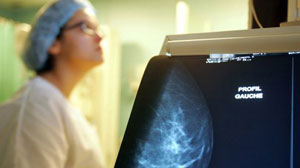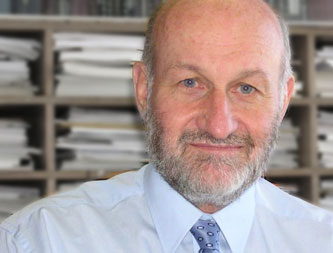Update: 22 November 2024
Cancer Prevention
Author: Julie Casper, C. Ac.
One out of every four deaths in the United States is from cancer. Currently, the odds of dying from a cancer related illness are roughly 50%.
We don't get cancer — we provoke cancer. Dr. William Li, MD, Cancer Researcher, President and Medical Director of the Angiogenesis Foundation says that every single person absolutely has microscopic cancers growing inside them. He explains that the human body is made up of more than 50 trillion cells that are continuously dividing to keep us healthy. But if just one of those cells makes a mistake, we can form a potentially microscopic cancer. Thankfully, most of these abnormal cells will never become dangerous because our bodies have built-in defenses against cancer. These include our immune system and our body's ability to resist blood vessels from growing into and feeding cancers.
Lifetime risk of developing or dying from cancer is 1 in 2 for men, and 1 in 3 for women. American Cancer Society
Why do some microscopic cancers develop into full blown cancer? According to Dr. Li, it is because we do things that provoke the development of cancer. This includes exposure to cigarette smoke and exposure to the tens of thousands of other toxins in our environment. Excessive alcohol and poor dietary habits are additional cancer provokers. The body has a hard time digesting the preservatives, chemicals and nitrates in processed foods and these carcinogens then accumulate in our bodies. Anything that dwells in the body that can provoke cancer cells is bad for you.
Additionally, anything that interferes with the respiratory enzymes in the cells of the body compel those cells to turn to fermentation (anaerobic glycolysis) in place of the usual oxidative process which renders the cells independent of the usual regulatory mechanism and thus starts them on their career as cancer cells. There are many mineral deficiencies and imbalances involved in the production of enzymes that will bring about this result. The great deficiency in our food supply is not in calories but in the protein, mineral nutrients and vitamins needed for the enzymatic activities that constitute life itself.
The emerging field of epigenetics, most simply defined as how our environment affects the way our genes are expressed, tells us that we are not slaves to our genes. Eating the right anti-inflammatory and immune-modulating foods, making the right lifestyle choices and finding effective ways to avoid both stress and environmental pollutants can ensure that a "defective gene" never wreaks its effects in the body. In fact, it is the bodily terrain that determines whether cancer develops: "There is growing realization that cancer is not primarily a genetic disease, but an epigenetic response to chronic stress."
Cancer is a generic term for a large group of diseases that can affect any part of the body. One defining feature of cancer is the rapid creation of abnormal cells that grow beyond their usual boundaries, and which can then invade adjoining parts of the body and spread to other organs.
According to the World Health Organization:
- Cancer is a leading cause of death worldwide.
- About 30% of cancer deaths are due to the five leading behavioral and dietary risks:
- high body mass index,
- low fruit and vegetable intake,
- lack of physical activity,
- tobacco use,
- alcohol use.
- Tobacco use is the most important risk factor for cancer causing 22% of global cancer deaths and 71% of global lung cancer deaths.
- Deaths from cancer worldwide are projected to continue rising, with an estimated 13.1 million deaths in 2030.
Ideally, avoid the need for cancer therapy.
Despite the fact that the U.S. Preventive Service Task Force recently concluded that many men are harmed as a result of prostate cancer screening and few, if any, benefit, many doctors have chosen to continue annual screenings. A Johns Hopkins University School of Medicine survey showed that of 125 primary care doctors interviewed, many were hesitant to stop PSA testing in patients who received it regularly.
The Journal of the American Medical Association (JAMA) published a National Cancer Institute report revealing the overdiagnosis and overtreatment of cancer and the harm this is causing millions of people.
National Cancer Institute report (A Medscape summary)
- The practice of oncology in the United States is in need of a host of reforms and initiatives to mitigate the problem of overdiagnosis and overtreatment of cancer, according to a working group sanctioned by the National Cancer Institute.
- Perhaps most dramatically, the group says that a number of premalignant conditions, including ductal carcinoma in situ (breast cancer) and high-grade prostatic intraepithelial neoplasia (prostate cancer), should no longer be called "cancer." Instead, the conditions should be labeled something more appropriate, such as indolent lesions of epithelial origin (IDLE), the working group suggests.
Unless there is a dramatic change in cancer care treatment or delivery between now and 2020, the nation is expected to face an acute shortage of oncologists. American Society of Clinical Oncology

1.3 Million women received harmful, unnecessary, invasive cancer treatment.
Over the last 30 years, routine mammograms have caused more than a million U.S. women to receive unnecessary and invasive cancer treatments, often detecting tumors that are harmless.
Also, recent studies indicate that mammograms would have to reduce breast cancer mortality by 51 percent to counterbalance the risks of the screening for women between the ages of 24 and 29, leading to the conclusion that the risks far outweigh the benefits for this age group. And even for older women into their 30s, the benefits appear marginal.
In fact, when you combine the increased risks of breast cancer from regular mammograms with the increased risk of cancer from hormone replacement therapy, you come to the unmistakable conclusion that much of the increase we've seen in breast cancer in the last 50 years is a direct result of medical intervention. And by some estimates, the rate of mammogram false positives is as high as 90 percent.
Breast Cancer Chemo Is Often Unnecessary — a Fact Cancer Centers May Not Want You to Know
Results of a major multi-year international study showed that 70% of women with early-stage disease who get chemotherapy — don't actually need it. Unfortunately this new information may not change the status quo. Currently there is an extremely profitable industry dependent upon 100% of women with breast cancer receiving conventional treatment. For example, a major medical center in Connecticut billed a woman $40,000 for each of 4 rounds of chemotherapy. What if she did not need it?
There are many levels of physical degeneration leading to a diagnosis of cancer. Cancer is a highly aggressive ‘final warning bell.’ Unfortunately, mineral balancing alone is not sufficient to correct active cancer. Conventional chemotherapy and radiation therapies are extremely toxic, and act in antagonistic opposition to mineral balancing recommendations and therapy. If you have been diagnosed with an active cancer, finding effective alternatives to conventional treatment is challenging. And while there are some effective therapies and good practitioners, a number of questionable (or worse) therapies exist also.
- There are many causes of cancer that you can control.
- There are things you can do to help cancer-proof your home.
- But most importantly, you need to cancer-proof your body.
Study: 700 percent increase in boomer generation having 3 (or more) chronic conditions.
It is well understood that the more robust your immune system function is, the better defense you have against developing cancer. Yet, generation by generation, health is declining. Professor Hugo's research shows that the proportion of boomers with three or more chronic conditions is a whopping 700 percent greater than in the previous generation.
Boomers between ages 53 and 62 are more than twice as likely to be obese as their parents were at the same age. In addition to having higher obesity rates than their parents, this group has twice the rate of asthma and hearing loss, triple the rate of diabetes and almost double the cholesterol level of their parents' generation. What does this indicate for the next generation?
Back to TopHow hTMA Prevents Cancer
If your cancer is in remission, hTMA can provide supportive help in rebuilding your immune function. Also, hTMA is a form of chelation therapy that is gentler and much safer than the aggressive forms commonly used in medical interventions (which may be necessary in cases of acute toxic exposure). In addition:
- hTMA increases cellular energy and the ability to adapt to stress.
- hTMA enhances immune-system function.
- hTMA improves digestion, helping you to better metabolize nutrients from your food and decrease toxic colon.
Resources
- 12 Cancer Prevention Tips EWG's Tips for avoiding common toxic chemicals that cause cancer.
- Dr. Christina Sanchez Effect of THC/CBD on cancer cells (5 min.)
- Medical Animation - What is Cancer? (1 min.)
- Cancer - The Forbidden Cures Exposé on repression of natural therapies.
- Study Reveals Even Healthy Humans Are "Riddled With Mutant Cells
- What do people die of? Mortality rates and data.
- The causes of cancer you can control.
- What Causes Cancer?
- Lifetime probability of-developing or dying from cancer
- What is Cancer? What Causes Cancer?
- Study: Ageing baby boomers a national priority.
- Effect of Three Decades of Screening Mammography on Breast-Cancer Incidence
- Mammograms Linked To An Epidemic of Misdiagnosed Cancers
- Statistics: Most frequent cancers
- Cancer Factsheet
- Cancer prevention W.H.O.
- The National Cancer Institute (NCI) / What Is Cancer?
- Cancer Defined
- Cancer Causes and Risk Factors
